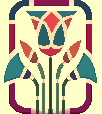
Tueday, May 27, 2008
"One Last Day at the Met"
7:56am

Tueday, May 27, 2008
"One Last Day at the Met"
7:56am
|
I woke early and started some packing. It's raining outside. I'm ready to go home. I wanna go home. I miss Julia. I wanna see my pictures. I've taken an additional day off just to rest. I wanna go home.
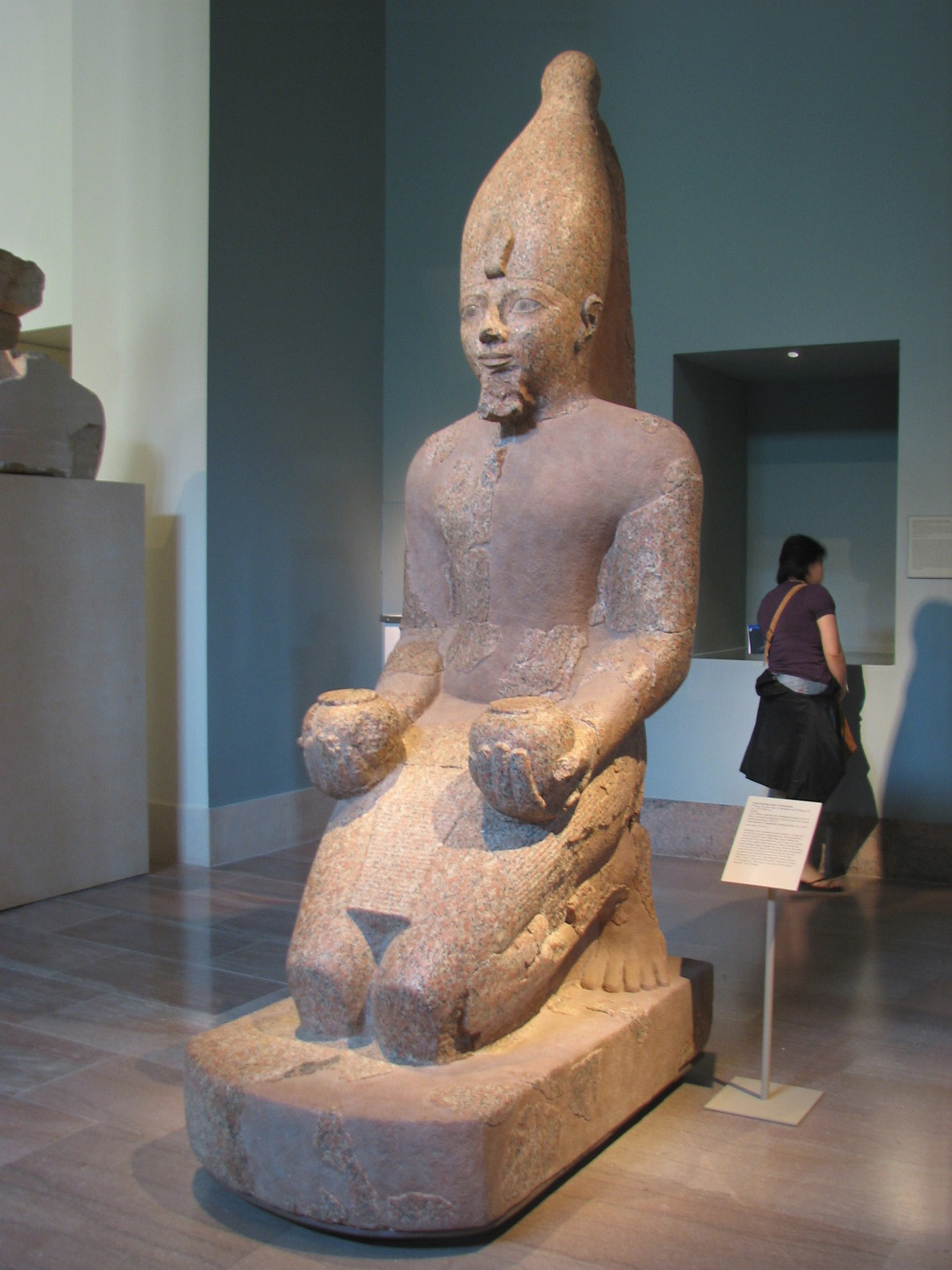 Large statue of kneeling Hatshepsut Dynasty 18, reign of Hatshepsut (1478-1458 BC) Red granite. 112 1/4 x 30 x 57 1/2 inches
|
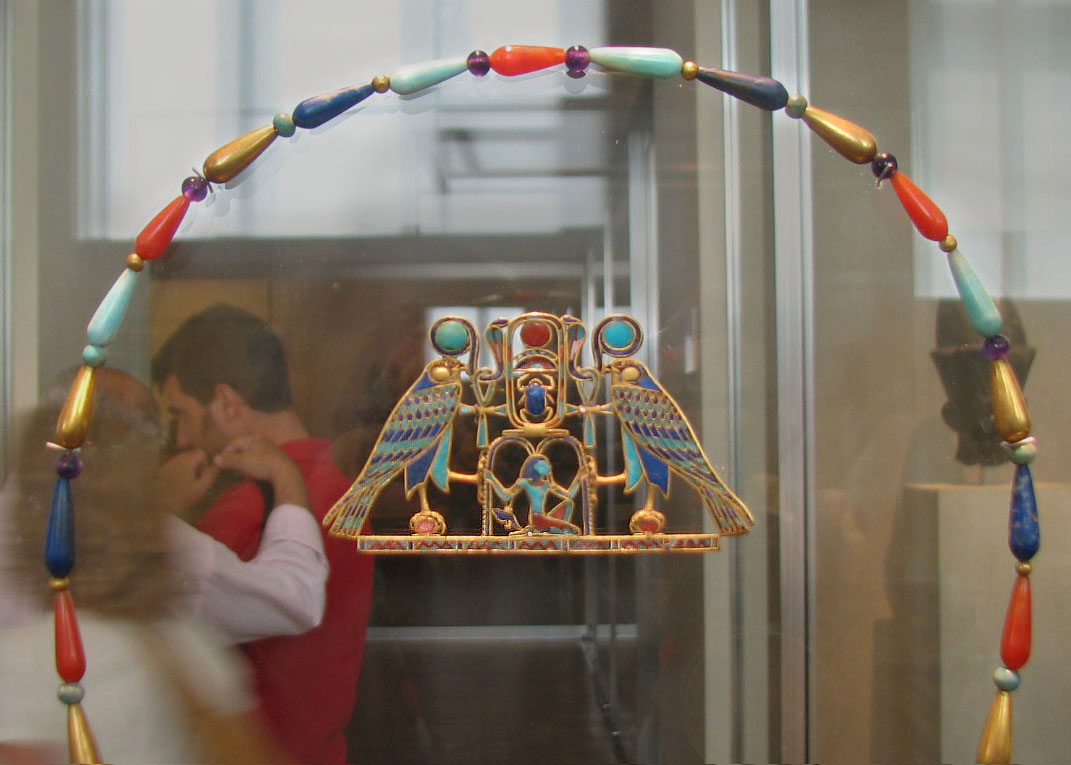
|
The redone rooms are very light and spacious. After giving the Egyptian area the last look-over, I headed up to the ancient Near East section and that Cypriot area. Yes, there were some lovely pieces there:
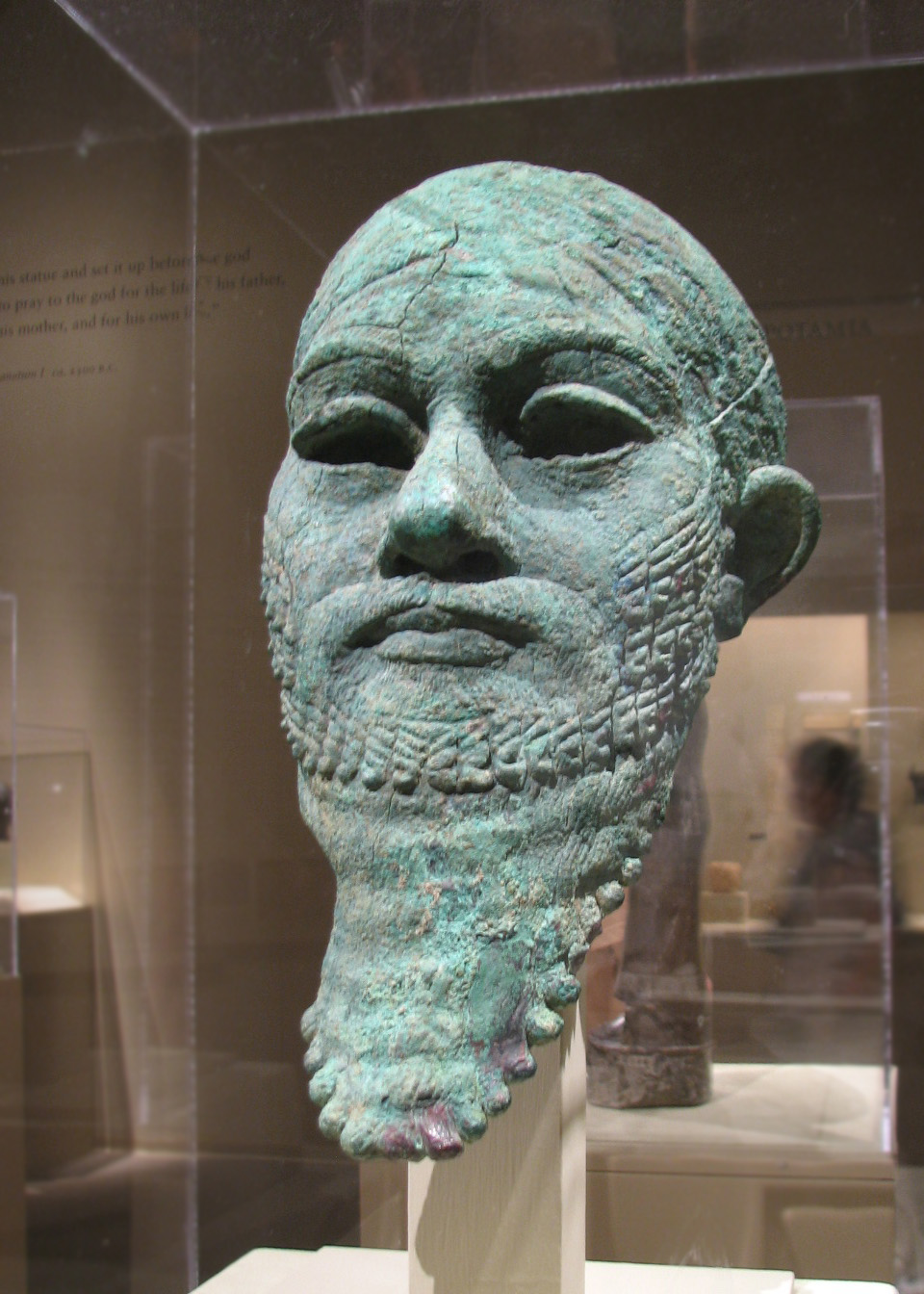 Head of a ruler Arsenical copper, Iran (?) 2300-3200 B.C Rogers Fund, 1947, 47.100.80 "Although there has been much debate about where and when this magnificent head was made, its close resemblance to an important bronze head of the late third millenium B.C., found at Nineveh, suggests a similar date. The headdress seems related to Elamite works of southwestern Iran, which may indicate an Iranian origin for the person represented. Indeed, the heavy-lidded eyes, prominent but unexaggerated nose, full lips and enlarged ears all suggest that this is a unique example of a portrait." |
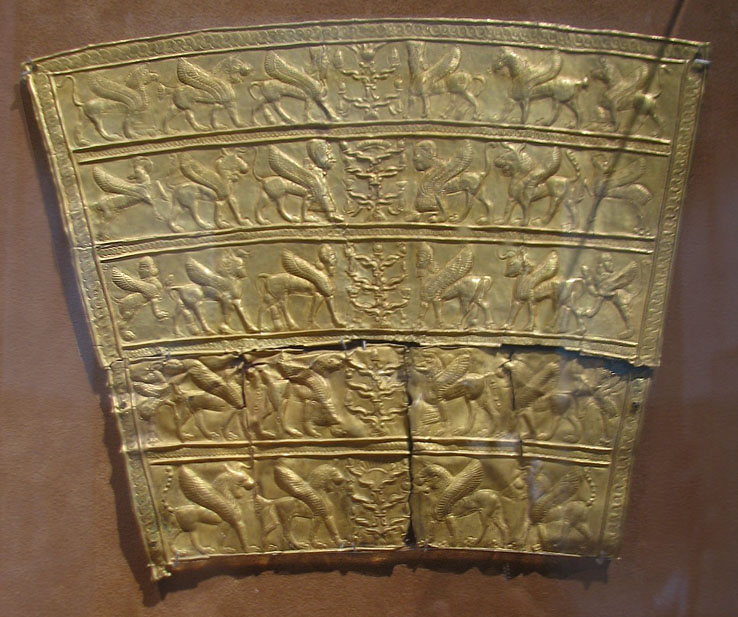
|
(from website info: "In 1947 a treasure was reputedly found at a mound near the village of Ziwiye in northwestern Iran. Objects attributed to Ziwiye are stylistically similar to Assyrian art of the eighth and seventh centuries B.C. as well as to the art of contemporary Syria, Urartu, and Scythia. Many objects of gold, silver, bronze, ivory, and ceramic have since appeared on the antiquities market with the provenance of Ziwiye, although there is no way to verify this identification. "This plaque, perforated around the edge, was perhaps once attached to a garment of a wealthy lord or to the shroud of a prince. Its design is similar to contemporary art of Assyria, Urartu, and Scythian-style objects. The plaque was originally composed of seven registers decorated in repoussé and chasing; two were separated and are now in the collection of the Archaeological Museum, Tehran. The registers display the familiar composite creatures of the ancient Near East striding in groups of three toward a stylized sacred tree, the central motif. The human-headed, winged lion, seen in the first and third register, is a creature that also appears as a gate guardian on the doorjambs in the palace of Ashurnasirpal II at Nimrud. A sphinx struts along the second band, followed by winged lions and an ibex. The bodies of the fantastic creatures are composed of unusual combinations of animal and bird parts: in the uppermost register, the lions sport ostrich tails, while in the second, their tails are those of scorpions. The trees of life bear pomegranates, pine cones, and lotus flowers. Each scene is framed and separated by a delicate guilloche pattern." Of course I took notice of how the ancient Near East was inspired by Egypt: |
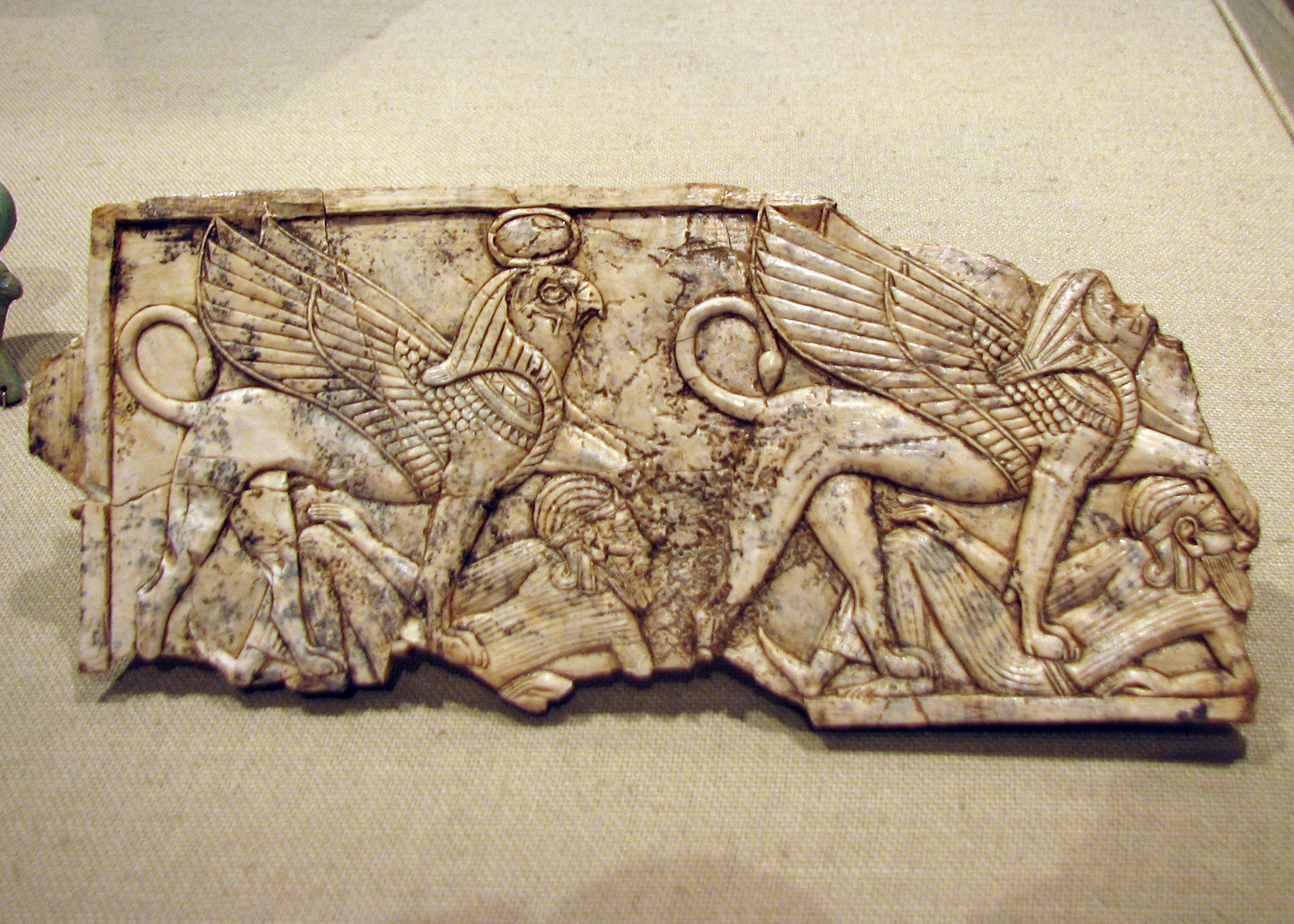
|
The info card says they are sphinxes, but they are not sitting, so I think they're really griffins. But what is interesting is that they have the head of the Egyptian god Horus. As Horus is represented by a falcon, he wears his wings well. Horus isn't the only Egyptian deity to make appearances in the ancient near east:
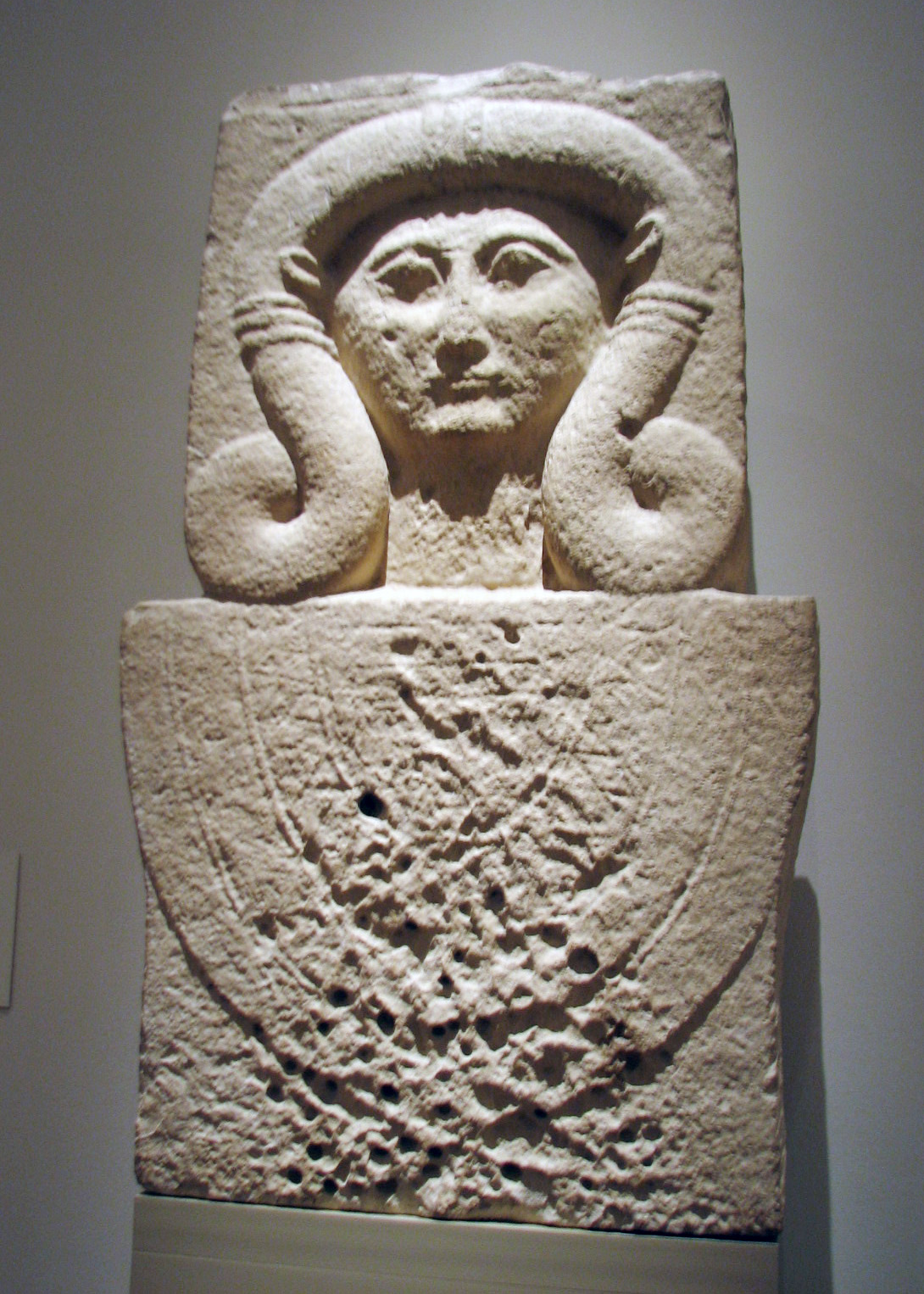 Limestone stele (shaft) with the head of Hathor Cypriot, Archaid, 2nd quarter of the 6th century, B.C. Said to be from the necropolis at Golgoi The Cesnola Collection, Purchased by subscription, 1873-76 (74.51.2475)
"The lower part of the shaft has been cut off: two dowel holes on the upper surface permitted an additional element to be fastened. Stone shafts incorporating the head of the Egyptian goddess Hathor occur particularily often at Amathus. Their appearance may be connected with the adventof Egyptian rule over the island. They played a role in the cult of the Great Goddess of Cyprus who, like Hathor, afforded protection against death and harm. The shafts also occur in funerary contexts."
The following piece features a well sculpted portrait:
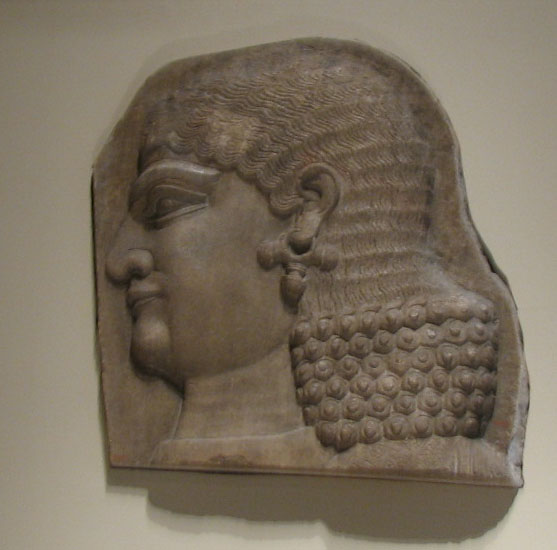 Head of a beardless royal attendant, possibly a eunuch Alabaster (gypsum), traces of red paint Mesopotamia, Khorsabad (ancient Dur-Sharrukin), Palace of Sargon II Neo-Assyrian period, 721-705 B.C. Giftof John D. Rockefeller Jr, 1933 33.16.2
"This head depicts an Assyrian male but one who lacks a beard and mustache. Some scholars believe that this distinction indicates that the figure is one of the eunuchs who made up a special category of courtiers within the Assyrian royal family."
Oh, I rather suspect he didn't have 'elective surgery', but hopefully he fared better than some.
I'll close with this exquisite piece:
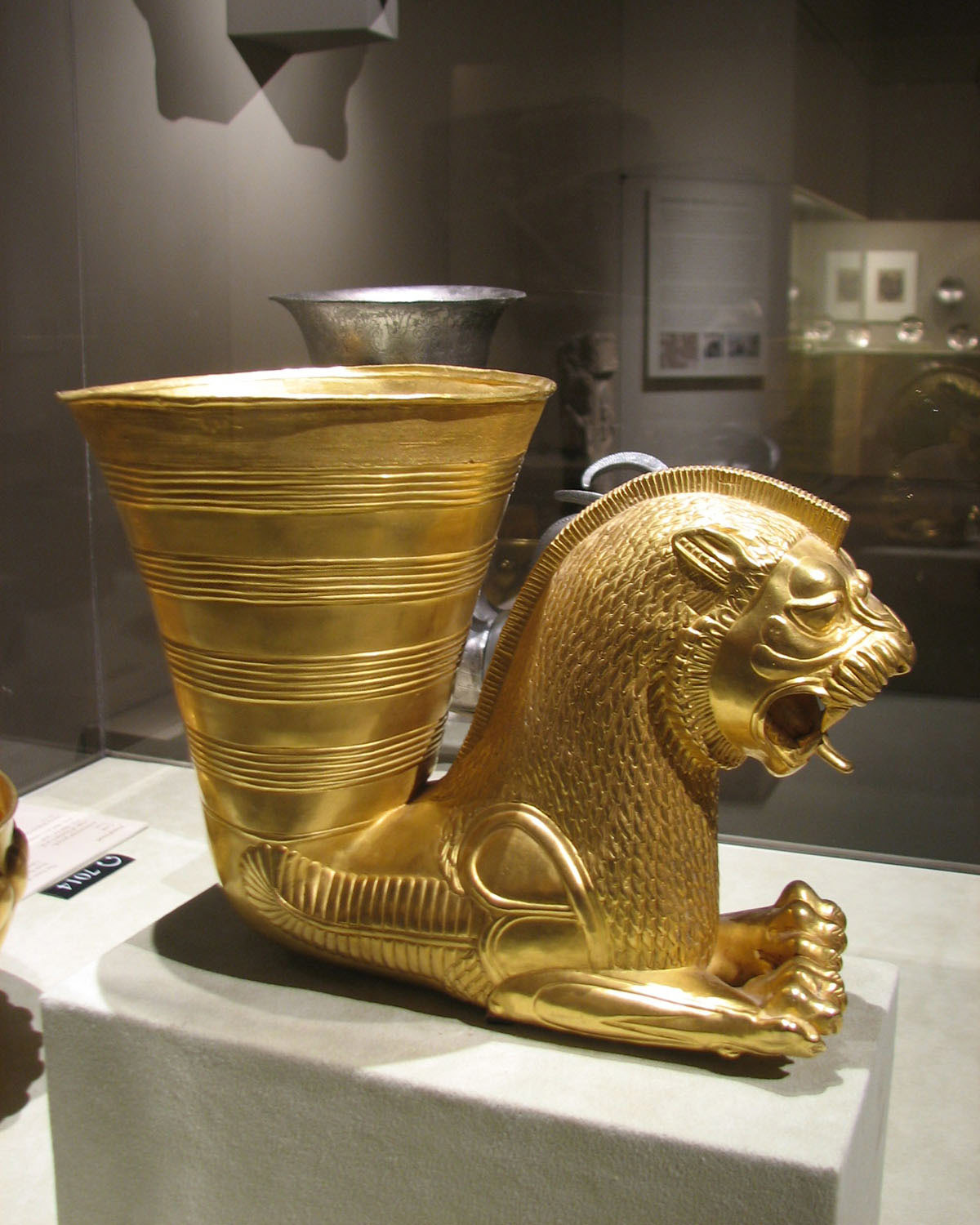 Vessel terminating in the forepart of a fantastic leonine creature, Achaemenid; 5th century B.C. Iran, Gold; H. 17 cm Fletcher Fund, 1954 (54.3.3)
"This gold vessel probably belonged to an Achaemenid king. Its manufacture, in which several parts were invisibly joined by soldering, demonstrates superb technical skill and artistic mastery."
(from website info):
By the time I'd made the rounds of the ancient Near East section, it was close to three o'clock and the tuna sandwich I'd had for breakfast was long ago used up. I must have gotten on the wrong route to the cafetera. It was like a maze and in every room I had to have the guard point me in the right direction. I chose a simple pasta with tomato sauce, along with more of that delicious squash, and the carrot juice.
After I finished that, it was near 3:30pm. The news had forecasted a thunderstorm around 4:00pm. I wanted to avoid the deluge and my feet hurt wickedly. It's possible for such tromping, my Birkies aren't the best, and I should have hiking boots or at least soles with a softer give to them.
Anyway, it was time to say farewell to the Met. So I headed back to the hotel, saying farewell to the subway. I've just now gotten familiarily with it, and don't turn the wrong way walking like I did at first.
After an iced tea at the café near the hotel, I turned in for a short nap. Then I looked at my photos, 739 of them. There's still some room, as the D.C. trip filled the card completely at about a hundred more. I could tell from the thumbnails view that a great many turned out clearly.
I'm happy. I'm pleased, I had a wonderful time. And now I'm glad to be going home tomorrow.
|
![]()
© Joan Lansberry